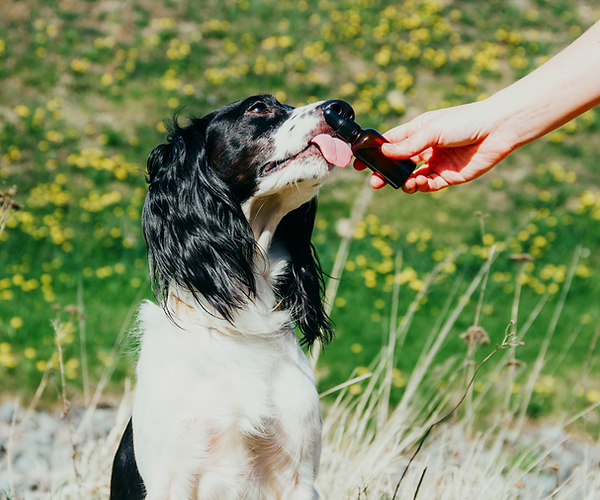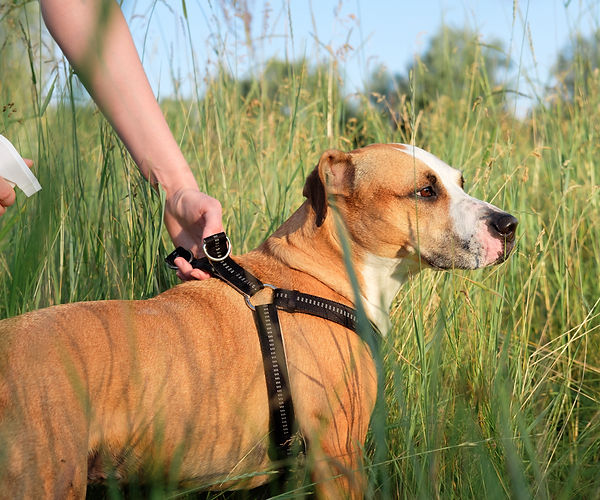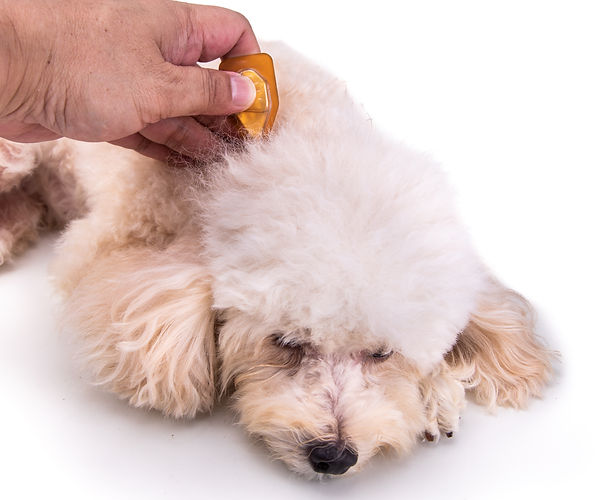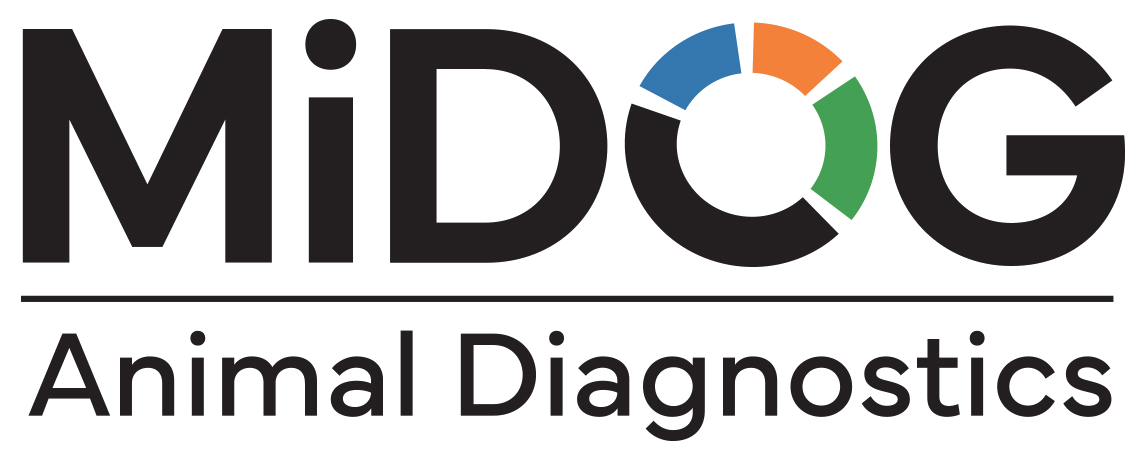
If you suspect your pet is ill, it is always recommended to take them to the vet.
Essential Oils Background
For those who haven’t yet taken the deep dive into the essential oils fad, here’s a quick breakdown of what they are. Essential oil is the final extract from a plant when it is exposed to either steam distillation, cold-presses, or different organic solvents. The process of extracting essential oil from a plant basically concentrates a lot of the naturally occurring compounds in the plant into an oil that can be readily used for a variety of purposes.

Essential oils are dilutions of naturally occurring compounds in plants that can be used for a variety of purposes.
Essential oils can be purified from a huge variety of plant types, and the properties of each oil will differ based on the plant that it came from, which is part of why they’re currently so popular. Different types of essential oils have been shown to have some unique properties and can help reduce bacterial and fungal growth, reduce inflammation, and possess many other useful properties. Due to their widespread use and potential as a natural curative, many people have taken to the idea that essential oils are the solution to all their problems, as well as that of their pets. Unfortunately, jumping to these conclusions can have very dangerous or even lethal consequences.
Negative & Harmful Effects of Essential Oils For Dogs
A prime example of the dangers of using essential oil treatments as an all-in-one cure is the use of Pennyroyal (Mentha Pulegium) oil. Extract of Pennyroyal has been demonstrated to have strong antibacterial properties and is effective against a number of different food-spoiling and infectious bacteria [1]. Looking at the beneficial properties of certain essential oils encourages their use as home remedies, but without full knowledge of their effects, there is the potential for disastrous outcomes. By way of example, one case study outlines how a man who used Pennyroyal oil to attempt treating his dog for fleas resulted in nausea and vomiting two hours after applying the oil, and the unfortunate death of the dog 48 hours later [2].

Even diluted essential oils can be harmful to dogs.
As it turns out, despite the beneficial antimicrobial properties that Pennyroyal possesses, it also acts as a liver toxin and is extremely harmful as an essential oil for dogs as well as people [3]. While Pennyroyal oil is an extreme example, it highlights the risks of unknown side-effects of essential oil treatments. While there are a number of other essential oils that demonstrate antimicrobial properties without being as toxic as Pennyroyal, using essential oils as a topical treatment for skin conditions, fleas, etc. can still be problematic simply because of their concentration. Without dilution to a proper dosage, tea tree oil has been shown to cause depression, lethargy, and muscular spasming in dogs and cats [4].
Potential Uses of Essential Oils For Dogs
Essential oils are very complex, and it’s difficult to predict every effect they may have when used as treatments. However, if you feel absolutely compelled to use essential oils on your dog, it’s probably safest to use essential oils as preventative care rather than as a treatment for a pre-existing condition. In a study assessing the ability of different essential oils to prevent tick infestations in dogs, it was found that a suspension of water and 2.5% turmeric oil was able to reduce the attachment of ticks to the legs and belly and of dogs by almost 60%,[5]. It’s important to note that the essential oil solution was sprayed over the dog’s fur and was also dramatically diluted (2.5% turmeric oil instead of 100%).

Tumeric oil being used on a dog’s neck.
While the example given demonstrates a potentially beneficial use of turmeric oil as a tick repellent, it’s important to realize that even using essential oils as preventative care measures are not risk-free. Even if you can be sure that your essential oil of choice is not toxic and won’t irritate your dog because it is diluted, you might inadvertently introduce an infection. This could happen due to the increased moisture in your dog’s coat allowing for overgrowth of bacteria or fungi unless the essential oil you’re using has very strong antimicrobial properties. If you’re absolutely resolved to use essential oils on your dog, make sure you get your vet’s advice and inform them of exactly how you plan to use it.
Why Treatment is Best Left for Professionals
When your dog is sick, despite the hassle and cost of going to a vet, it is undoubtedly the safest option. Taking treatment into your own hands using home remedies such as essential oils is not only dangerous for the reasons already mentioned, but also because even if your treatment doesn’t directly negatively impact your dog’s health, it can delay getting proper treatment until their condition deteriorates. The reality is that the average pet owner can’t do the type of thorough, scientific research necessary to fully confirm the safety of using an essential oil; and even if they could, there’s no guarantee that there have been sufficient studies done in the first place.

A DNA Sequencing-based test.
While it’s easy to take some internet magazine article and use it as a source of diagnostic information, it’s much harder to verify that they’re correct; and you don’t want your dog to suffer the consequences. New diagnostic technologies like the MiDOG test are becoming more mainstream and vets are in a better position to look after your pet’s wellbeing than ever before. The diagnostic power of DNA sequencing-based tests like the MiDOG test allows vets to specifically identify and target the pathogens causing the infection and can dramatically increase the odds of successful treatment. If your dog is suffering from an infection, don’t take a chance on an essential oil home remedy. Ask your vet about the MiDOG test today.
References:
1. Silva N;Alves S;Gonçalves A;Amaral JS;Poeta P; “Antimicrobial Activity of Essential Oils from Mediterranean Aromatic Plants against Several Foodborne and Spoilage Bacteria.” Food Science and Technology International = Ciencia y Tecnologia De Los Alimentos Internacional, U.S. National Library of Medicine, pubmed.ncbi.nlm.nih.gov/23444311/.
2. WE;, Sudekum M;Poppenga RH;Raju N;Braselton. “Pennyroyal Oil Toxicosis in a Dog.” Journal of the American Veterinary Medical Association, U.S. National Library of Medicine, pubmed.ncbi.nlm.nih.gov/1568929/.
3. “Pennyroyal Oil.” LiverTox: Clinical and Research Information on Drug-Induced Liver Injury [Internet]., U.S. National Library of Medicine, 28 Mar. 2020, www.ncbi.nlm.nih.gov/books/NBK548673/.
4. MR;, Khan SA;McLean MK;Slater. “Concentrated Tea Tree Oil Toxicosis in Dogs and Cats: 443 Cases (2002-2012).” Journal of the American Veterinary Medical Association, U.S. National Library of Medicine, pubmed.ncbi.nlm.nih.gov/24344857/.
5. R;, Goode P;Ellse L;Wall. “Preventing Tick Attachment to Dogs Using Essential Oils.” Ticks and Tick-Borne Diseases, U.S. National Library of Medicine, pubmed.ncbi.nlm.nih.gov/29606618/.
